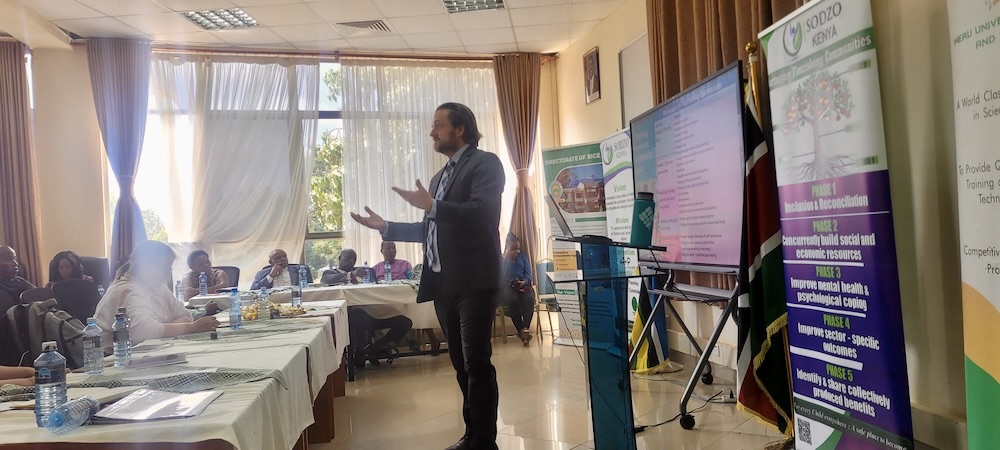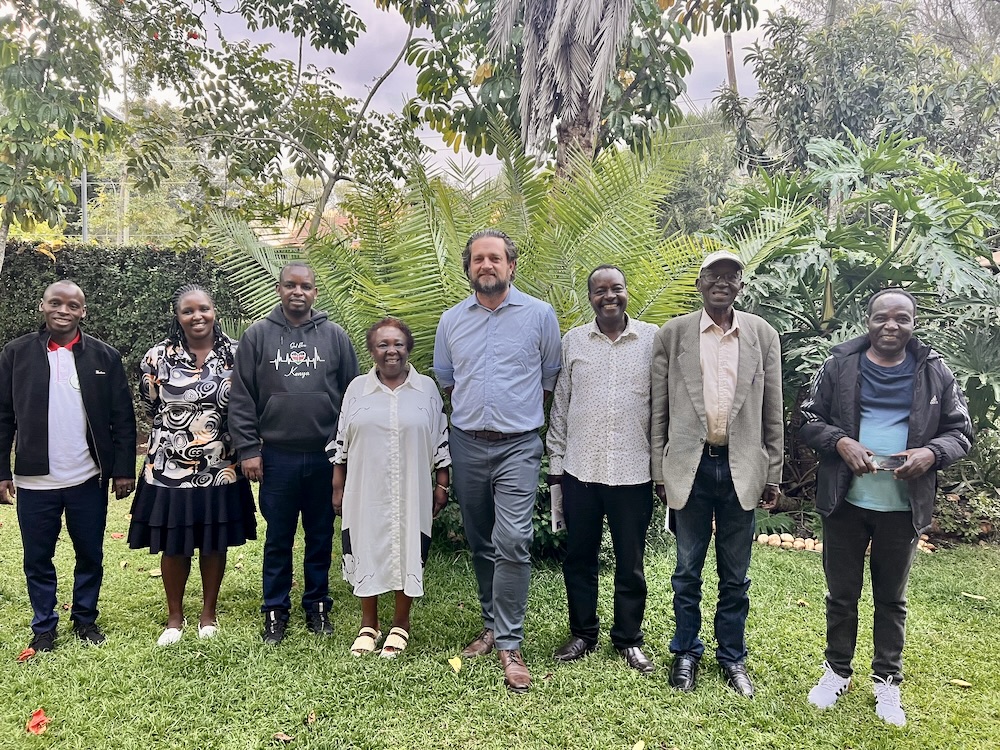Dr. Michael Goodman, Associate Professor in the Department of Population Health and Health Disparities at UTMB, recently returned from Kenya where he led significant advances in implementing the Flourishing Communities Model (FCM), a framework he developed over years of research to support community-led health, social, and economic development.
The trip yielded impressive outcomes, including two masterclasses on the FCM delivered to regional leaders and university faculty, a keynote address at a national climate change and community resilience conference, and the launch of a new Centre for Flourishing Community Policy, Practice and Research at Chuka University. Plans are now underway to train county-level leadership in two counties to implement the model, alongside a pilot project connecting clinics and communities to better support children with disabilities.
"These partnerships demonstrate how the FCM can address multiple challenges simultaneously," says Dr. Goodman. "From strengthening family structures to building climate resilience, the model provides a framework for communities to identify and solve their own most pressing problems."
Understanding the Flourishing Communities Model
The FCM emerged from a simple question posed in 2012: "What do we do about children who live on the street?" Working with communities in Kenya, Dr. Goodman developed an approach that is best understood using the metaphor of a fruit tree.
Phase 1 (Roots) Communities build inclusion and reconciliation, particularly focusing on those who have been marginalized or excluded. This creates the foundation for collective action by establishing trust and connection.
Phase 2 (Trunk) Communities build social capital alongside economic strength, typically through group-based microlending where members contribute small amounts weekly (about 20 cents) with 10% interest. This concurrent development of social and economic resources is crucial—participants learn to work collaboratively rather than competing for limited resources.
Phase 3 (Sap) As social trust develops, communities address trauma, depression, and other mental health challenges while building positive emotions. Dr. Goodman's team developed a mental health curriculum called "Pathways to Flourishing" based on psychological flexibility and positive psychology principles to support this phase.
Phase 4 (Branches, Leaves, Flowers) Communities establish resource committees and parliamentary committees to attract external partnerships and resources, targeting specific improvements in health, education, livelihoods, and other sectors based on their own priorities.
Phase 5 (Fruit) Communities celebrate tangible benefits—such as reduced violence, improved health outcomes, and increased community cohesion—and share their success stories to inspire others.
The model's effectiveness is demonstrated through numerous success stories. In one village, after implementing FCM, over 1,000 families now participate weekly in program activities. What began with one child's reintegration (after living on the streets) expanded to transform an entire community.
"For every dollar we invest in supporting program staff and logistics, communities see an average twelve-fold annual increase in household income," explains Dr. Goodman. "But the economic gains are just one dimension—we also see improvements in mental health, food security, and community cohesion."
A Unique Approach to Community Development

Unlike traditional development models that focus on distributing resources, the FCM emphasizes building enduring social connections alongside economic progress. "Our society often puts belonging and interpersonal connection in a secondary position," Dr. Goodman notes. "But in reality, we never access material goods without also belonging to some social structure—this is true from the time we're developing in our mother's uterus through adulthood."
The FCM is the first quantitatively assessed, peer-reviewed intervention to reintegrate street-involved children in any Low- or Middle-Income Country that examines both child-level and family-level factors. The research has been published in journals including Frontiers in Psychology and the Journal of Community & Applied Social Psychology.
Expanding the Model’s Reach
As the FCM continues to gain momentum, Dr. Goodman is exploring several new directions. His collaborations with men's groups have led to national-level interest in strengthening male coping and adaptability, while a new partnership with the Women's Representative Office aims to advance women's leadership in governance and society.
The program is also expanding its focus to address climate change challenges and conflict resolution. "We're seeing communities adapt the model in innovative ways," says Dr. Goodman. "For example, one village experiencing conflict with neighboring pastoralists adapted our loving-kindness meditation practice to build peace with those they previously saw as adversaries."
With the establishment of the Centre for Flourishing Community Policy, Practice and Research at Chuka University, the model is poised to reach more communities and influence policy at the national level. Dr. Goodman and his team continue to support these efforts while developing digital tools to facilitate implementation and measurement.
The Flourishing Communities Model represents a paradigm shift in how we approach public and population health—placing communities at the center of their own development and creating systems where social connection and economic progress reinforce rather than compete with each other.
Learn more about and support Dr. Goodman's non-profit, Sodzo International.
Have news or an event to share? We’d love to feature it on the SPPH News & Events blog! Email SPPHmarketing@utmb.edu with your story ideas.
